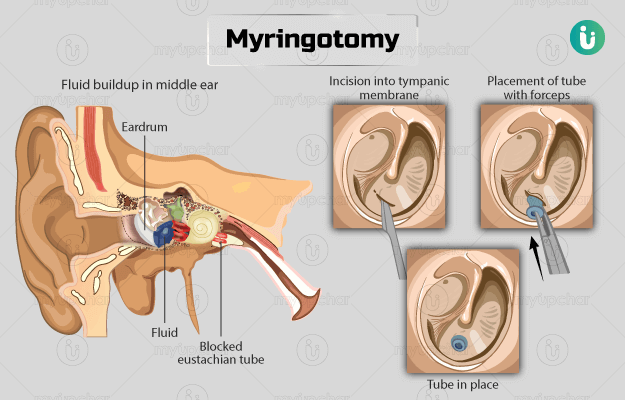Summary
Myringotomy is a surgery that involves making a hole in the ear drum to remove or drain out the fluid accumulated inside the middle ear. An eardrum is a membrane located between the middle and the external ear. It vibrates to outer sounds and helps us in hearing. The excessive build-up of fluid in the middle ear may compromise your hearing ability.
Prior to this surgery, the doctor will perform certain tests like a hearing test or tympanometry to examine your eardrum. You will have to arrange for your drive back home after the surgery. The doctor may ask you to fast for up to eight hours until the procedure is conducted. The surgery can be done in adults or children. Children need general anaesthesia for this surgery, however, in adults, a myringotomy can be performed with a local anaesthesia (only the surgical site is numbed). During this surgery, the doctor will make a cut on the eardrum to remove the fluid. A tube may be inserted to expel the fluid. After the surgery, you will be prescribed ear drops and will be asked to use earplugs until the cut is completely healed.






































